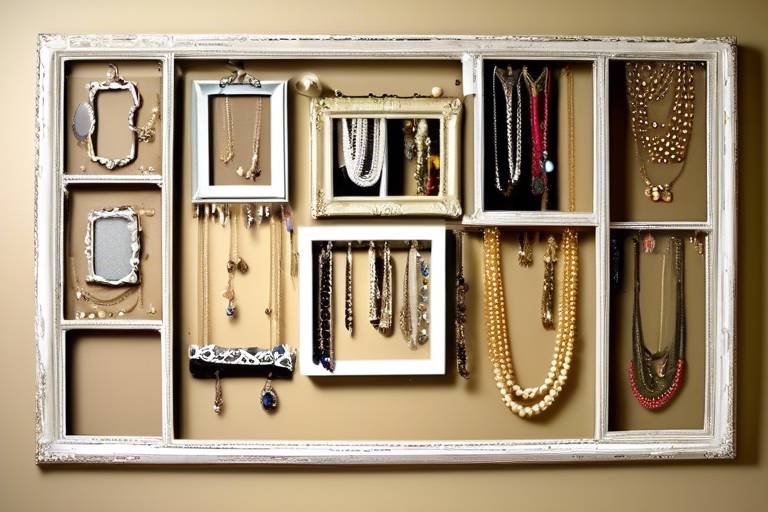Repurpose a Dining Table into a Stylish Desk
Are you tired of working from a cramped, uninspiring desk that does little to boost your productivity? If so, it might be time to consider a unique and stylish solution: repurposing a dining table into a desk. This transformation not only breathes new life into an old piece of furniture but also creates a spacious and inviting workspace that can enhance your home office or study area. Imagine the satisfaction of taking something that once hosted family dinners and turning it into a functional, chic desk that reflects your personal style. In this article, we’ll explore creative ways to make this transformation, ensuring your new desk is both practical and aesthetically pleasing.
The first step in this exciting journey is selecting the ideal dining table for conversion. Not all tables are created equal, and the right choice can make all the difference. Consider the size, shape, and material of the table. If you have a small space, a round or compact table might be the best option, while larger areas can accommodate rectangular or square tables. Think about the material too; wooden tables offer a classic look, while glass or metal options can add a modern twist. Ultimately, you want a table that not only fits your space but also aligns with your style preferences. Remember, this is not just a desk; it's a centerpiece of your workspace.
Before diving into the transformation, it’s crucial to gather the necessary tools and materials. Having everything ready will streamline the process and keep you from running to the hardware store mid-project. Here’s a quick overview of what you’ll need:
When it comes to tools, having the right ones can make or break your project. Here’s a handy list of essential tools:
- Saw: For cutting any parts of the table that need resizing.
- Drill: To make holes for screws or to attach hardware.
- Sander: To smooth out surfaces and edges for a polished finish.
- Paintbrushes: For applying your chosen finishes.
Accurate measurements are vital for a seamless conversion. Using tools like tape measures and carpenter's squares can help ensure everything fits perfectly. A small miscalculation can lead to a desk that wobbles or doesn’t fit in your intended space, which is the last thing you want!
Once your desk is shaped and assembled, it’s time to think about the finishing touches. Explore various finishing products such as paints, stains, and sealants to enhance the aesthetics of your newly transformed desk. These products not only add color but also protect the surface from wear and tear, ensuring your desk remains beautiful for years to come.
Besides the tools, you'll also need some materials to elevate the look of your desk. Consider adding hardware like stylish knobs or handles, decorative elements such as stencils or decals, and protective coatings that can enhance both durability and appearance. The right materials can transform a basic desk into a statement piece that ties your entire workspace together.
Now that you have your table and tools ready, let’s dive into the step-by-step transformation process. This guide will take you through disassembly, modification, and reassembly, ensuring you end up with a desk that you absolutely love.
Understanding how to properly disassemble your dining table is essential for a successful transformation. Begin by removing any detachable parts, like leaves or legs, and keep track of screws and hardware. This not only makes the process easier but also ensures you won’t lose any important pieces. Always use caution and take your time; rushing can lead to mistakes or damage.
Once disassembled, modifications may be necessary to create a functional desk. This could include adjusting the height to suit your seating arrangement or expanding the surface area to accommodate your work materials. Stability is key, so ensure that any changes you make reinforce the structure rather than compromise it. Think of it as building a solid foundation for your productivity!
Personalizing your desk can make it uniquely yours. This section discusses ideas for customizing your desk with colors, patterns, and accessories. The goal is to create a workspace that inspires you every day.
The right colors and patterns can enhance your workspace's ambiance. Choose hues that reflect your personality and complement your home decor. Whether you prefer bold, vibrant colors or soft, muted tones, the options are endless. Think of your desk as a canvas waiting for your artistic touch!
Accessories can make your desk more functional and visually appealing. Discover ideas for organizers, lighting, and decor that enhance usability and aesthetics. A well-placed lamp can brighten your workspace, while stylish organizers can keep your supplies neat and accessible. Remember, a little creativity goes a long way in making your desk a true reflection of you.
Q: Can I use any dining table for this project?
A: While most dining tables can be repurposed, it’s best to choose one that fits your space and style. Consider the table's material and condition before starting.
Q: How difficult is it to disassemble a dining table?
A: Disassembling a dining table can be straightforward if you have the right tools and take your time. Follow the steps carefully to avoid damaging any parts.
Q: What’s the best finish for a desk?
A: The best finish depends on your style and usage. For a durable surface, consider a polyurethane sealant, while stains can add warmth and character.
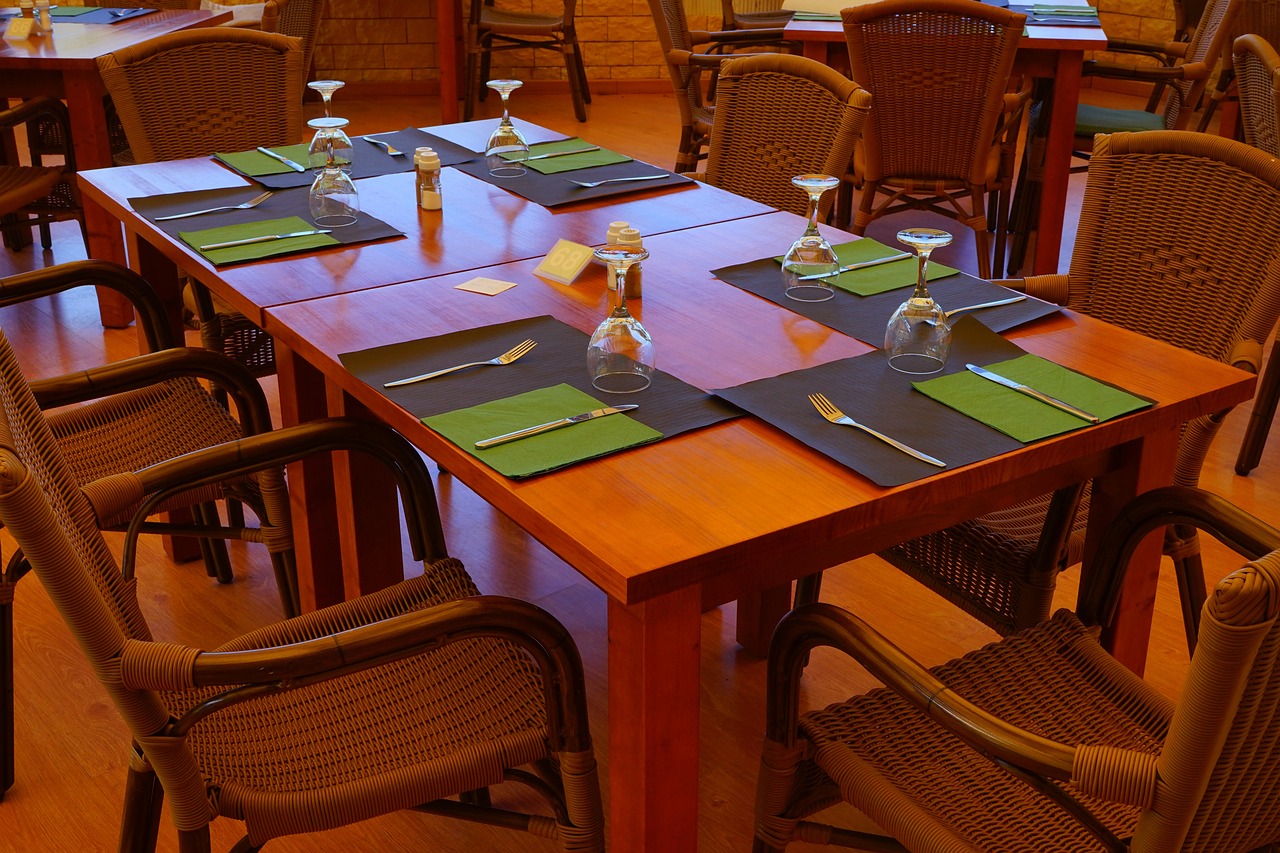
Choosing the Right Dining Table
When it comes to transforming an ordinary dining table into a stylish desk, choosing the right table is the first and most important step. You want a piece that not only fits your functional needs but also complements your home decor. Think about the size of the table—too small, and you’ll find yourself cramped for space; too large, and it may overwhelm your room. A table that measures around 60 inches long is often ideal for a desk, providing ample workspace without taking over the room.
Next, consider the shape of the table. Round tables can add an inviting touch to your workspace, promoting a sense of openness and collaboration. On the other hand, rectangular tables are more traditional and often provide a more defined workspace, making them a popular choice for desks. If your space is limited, a square table might do the trick, offering a cozy yet functional area to work.
Now let's talk about material. The material of your dining table can significantly influence its transformation into a desk. Here are a few popular options:
- Wood: Offers durability and a classic look. It can be sanded and refinished easily.
- Glass: Provides a modern aesthetic and can make a small space feel larger.
- Metal: Ideal for an industrial vibe and is often very sturdy.
Don't forget to consider the style of the table. Is it contemporary, rustic, or vintage? Your desk should reflect your personal taste while also harmonizing with the rest of your home. A sleek, modern dining table could serve as a chic desk, while a distressed farmhouse table might give your workspace a cozy, inviting feel.
Finally, think about the condition of the table. If it's wobbly or has significant damage, it might not be the best candidate for conversion. Look for a table that is structurally sound and has a surface that can be easily modified or refinished.
In summary, when choosing the right dining table to repurpose into a desk, keep in mind the following factors:
| Factor | Considerations |
|---|---|
| Size | Should fit your space without overwhelming it. |
| Shape | Round, rectangular, or square based on your needs. |
| Material | Wood, glass, or metal depending on your style and durability requirements. |
| Style | Must complement your home decor. |
| Condition | Ensure it is structurally sound and aesthetically pleasing. |
With these considerations in mind, you’re well on your way to selecting the perfect dining table for your stylish desk transformation!

Essential Tools and Materials
Before diving into the exciting journey of transforming your dining table into a stylish desk, it’s crucial to gather the that will make this project not only feasible but also enjoyable. Think of this as your toolkit of creativity, where each item plays a vital role in bringing your vision to life. The right tools can make the difference between a smooth transformation and a frustrating experience. So, let’s get started!
First and foremost, you’ll need a selection of tools that are fundamental to the process. Here’s a quick rundown:
- Saw: A circular saw or jigsaw will help you cut the table to the desired dimensions.
- Drill: Essential for making holes for screws and attaching hardware.
- Sander: To smooth out rough edges and prepare the surface for finishing.
- Measuring Tape: Accurate measurements are key to a successful transformation.
- Square: Ensures your cuts and angles are precise.
Now, let’s talk about the materials that will not only aid in the structural integrity of your desk but also enhance its aesthetic appeal. Depending on your personal style and the look you’re going for, you might consider the following:
- Paint or Stain: Choose a color that complements your home decor. Stains can enhance the natural grain of the wood, while paint can add a pop of color.
- Sealant: Protects the surface from wear and tear while giving it a polished finish.
- Hardware: Don’t forget about knobs, handles, and hinges. These small details can make a big difference in the overall look.
- Protective Coatings: Consider adding a layer of polycrylic or polyurethane for added durability.
Furthermore, having a workspace set up with all your tools and materials organized will streamline the process. Imagine trying to bake a cake without having all your ingredients in front of you—it would be chaotic! The same principle applies here. Create a designated area where you can easily access everything you need. This not only saves time but also keeps your creativity flowing.
In essence, the success of your dining table transformation hinges on your preparation. By gathering the right tools and materials beforehand, you set yourself up for a smooth and enjoyable project. So, roll up your sleeves and get ready to turn that ordinary dining table into a stunning desk that reflects your personal style and meets your functional needs!

Tools for the Job
When it comes to transforming your dining table into a stylish desk, having the right tools can make all the difference. Picture this: you’re ready to dive into your project, but you realize you’re missing a crucial tool. Frustrating, right? To avoid that scenario, let’s ensure you’re well-equipped before you start. Here’s a rundown of the essential tools you’ll need to successfully repurpose your dining table.
First and foremost, a circular saw or a jigsaw will be your best friends. These tools are perfect for cutting your table down to the desired dimensions. If you’re not familiar with using power tools, don’t worry! There are plenty of tutorials online to guide you through the process. Just remember, safety first! Always wear protective eyewear and follow the manufacturer’s instructions.
Next, you’ll need a drill to create holes for screws and to attach any new hardware you might be using. A screwdriver is also essential for tightening screws and making adjustments. You might also want to have a sander handy. This tool will help you smooth out any rough edges after cutting, giving your desk a polished look. Depending on the finish you desire, you can choose between manual sanders or electric ones.
Now, let’s talk about measuring tools. Accurate measurements are critical in this project. A tape measure is a must-have, along with a square to ensure your cuts are straight and your desk is level. It’s like the foundation of a house—if it’s not level, everything else will be off!
Lastly, you’ll want to gather some finishing tools. These include brushes or rollers for applying paint or stain, as well as rags for wiping off excess product. Don’t forget about protective gear such as gloves and a mask, especially if you’re working with strong chemicals.
Here’s a quick overview of the essential tools:
| Tool | Purpose |
|---|---|
| Circular Saw / Jigsaw | Cutting the table to size |
| Drill | Creating holes and attaching hardware |
| Screwdriver | Tightening screws and adjustments |
| Sander | Smoothing edges for a polished finish |
| Tape Measure | Measuring dimensions accurately |
| Square | Ensuring cuts are straight and level |
| Finishing Tools | Applying paint or stain |
With these tools in hand, you’ll be well on your way to creating a stunning desk that not only serves its purpose but also adds a touch of personality to your workspace. So, gather your gear, and let’s get started on this exciting transformation!
Q: Do I need to be an expert to repurpose a dining table into a desk?
A: Not at all! With the right tools and some patience, anyone can tackle this project. Just take your time and follow the steps carefully.
Q: Can I use any dining table for this project?
A: While you can use various dining tables, it’s best to choose one that is sturdy and has a surface area that suits your needs.
Q: What if I don't have all the tools listed?
A: You can often rent tools from local hardware stores or borrow from friends. Just ensure you have the essentials for cutting, drilling, and finishing.
Q: How long will the transformation take?
A: Depending on your experience level and the complexity of the modifications, it can take anywhere from a few hours to a couple of days.

Measuring Tools
This article explores creative ways to transform an ordinary dining table into a functional and stylish desk, perfect for home offices or study spaces.
Selecting the ideal dining table for conversion is crucial. Consider size, shape, and material to ensure it fits your space and style preferences.
Before starting your project, gather the necessary tools and materials. This section outlines what you need for a successful transformation.
A comprehensive list of tools required for repurposing your dining table, including saws, drills, and sanders, to help streamline the process.
When it comes to transforming your dining table into a stylish desk, accurate measurements are the cornerstone of your success. Imagine trying to fit a square peg into a round hole; that’s what it feels like to skip this crucial step! You want your new desk to not only fit within your designated space but also to be comfortable and functional for your work needs.
To kick things off, invest in a good quality tape measure. This handy tool will allow you to measure the length, width, and height of your dining table accurately. It’s not just about the table itself; you’ll also want to measure the space where the desk will reside to ensure a perfect fit. Additionally, a carpenter's square is invaluable for ensuring that your cuts are straight and that the corners are precisely aligned. This tool will help you avoid any future wobbles or instability in your desk.
Consider using a level as well. This tool will help you check that your desk surface is perfectly horizontal, which is essential for both aesthetics and usability. A desk that isn’t level can lead to frustration, especially when working on tasks that require precision.
Here’s a quick overview of the measuring tools you should have on hand:
| Tool | Purpose |
|---|---|
| Tape Measure | To measure dimensions of the table and workspace. |
| Carpenter's Square | To ensure straight cuts and right angles. |
| Level | To confirm that the desk surface is horizontal. |
By equipping yourself with these measuring tools, you’ll set the foundation for a smooth transformation process. Remember, taking the time to measure twice and cut once can save you from headaches down the road. So, grab your tools and let’s get started!
Follow a detailed guide on how to convert your dining table into a desk, including disassembly, modification, and reassembly steps.
Understanding how to properly disassemble your dining table is essential for a successful transformation. This section provides tips on safely taking it apart.
Once disassembled, modifications may be necessary to create a functional desk. Learn about adjustments to height, surface area, and stability.
Personalizing your desk can make it unique. This section discusses ideas for customizing your desk with colors, patterns, and accessories.
The right colors and patterns can enhance your workspace's ambiance. Explore options that reflect your style and complement your home decor.
Accessories can make your desk more functional and visually appealing. Discover ideas for organizers, lighting, and decor that enhance usability and aesthetics.
Q: Can I use any dining table for this transformation?
A: While most dining tables can be repurposed, it's best to choose one that is sturdy and has a suitable height for a desk.
Q: Do I need advanced woodworking skills?
A: Basic skills are sufficient, but familiarity with tools and measurements will help greatly.
Q: How long does the transformation process take?
A: Depending on your experience and the complexity of the modifications, it can take anywhere from a few hours to a couple of days.

Finishing Products
When it comes to transforming your dining table into a stylish desk, the you choose can make all the difference. These products not only enhance the aesthetic appeal of your desk but also protect it from wear and tear over time. Imagine your desk as a blank canvas; the right finish will bring out its beauty and character, turning it into a centerpiece of your workspace.
There are several types of finishing products to consider, each offering unique benefits:
- Paint: A fresh coat of paint can completely change the look of your desk. Whether you opt for a bold color to make a statement or a soft hue for a calming effect, paint allows for endless creativity. Remember to choose a paint that is suitable for furniture to ensure durability.
- Stain: Staining is perfect for those who want to showcase the natural grain of the wood. It adds depth and richness to the surface while allowing the wood's texture to shine through. Plus, stains come in various shades, from light to dark, giving you flexibility in design.
- Sealants: After applying paint or stain, a sealant is crucial. It acts as a protective barrier against scratches, spills, and moisture. Look for sealants that are specifically formulated for furniture to ensure long-lasting protection.
Before you dive into applying these finishing products, it's important to prepare your desk properly. Start by sanding the surface to create a smooth base. This will help the paint or stain adhere better and result in a more professional-looking finish. After sanding, wipe down the surface with a damp cloth to remove any dust particles.
Once you’ve decided on your finishing products, consider creating a finishing schedule to keep your project organized. Here's a simple table to help you plan:
| Task | Product | Estimated Time |
|---|---|---|
| Preparation (sanding and cleaning) | N/A | 1-2 hours |
| Applying Paint or Stain | Paint/Stain | 2-4 hours (including drying time) |
| Applying Sealant | Sealant | 1-2 hours (including drying time) |
In conclusion, the finishing products you select are vital to the overall success of your dining table transformation. By choosing the right combination of paint, stain, and sealant, you can create a desk that not only looks fantastic but also stands the test of time. So, roll up your sleeves, unleash your creativity, and get ready to turn that ordinary dining table into a stunning desk that reflects your personal style!

Materials for a Stylish Finish
When it comes to transforming your dining table into a stylish desk, the materials you choose play a crucial role in determining the overall look and feel of your new workspace. Whether you're aiming for a sleek modern finish or a rustic charm, selecting the right materials can make all the difference. Start by considering the hardware that will not only provide functionality but also enhance the aesthetic appeal of your desk. Think about drawer pulls, hinges, and brackets that match your desired style. For a contemporary feel, opt for brushed metal or glass accents, while vintage-inspired designs may benefit from ornate brass or ceramic pieces.
Another essential component is the decorative elements. These can range from simple additions like a fresh coat of paint to more elaborate designs such as patterned veneers or decals. If you’re leaning towards a more personalized touch, consider using stencils or vinyl wraps to create unique patterns that resonate with your personality. Remember, the right color can evoke different emotions and set the mood for your workspace. For instance, calming blues or greens can enhance productivity, while vibrant yellows or reds can inspire creativity.
Don’t forget about the protective coatings that will help maintain your desk's beauty over time. Applying a sealant or topcoat can protect against scratches and stains, ensuring that your desk remains in pristine condition for years to come. There are various options available, such as polyurethane, which offers durability, or wax finishes, which provide a softer, more natural look. Choosing the right sealant will depend on the material of your desk and the level of protection you require.
Finally, consider the surface material itself. If your dining table is made of wood, think about whether you want to keep its natural finish or apply a stain to alter its appearance. For a more modern twist, you might even consider covering the surface with laminate or glass, which can provide a sleek, easy-to-clean finish. Remember, the goal is to create a workspace that not only looks great but also feels inviting and functional.
In summary, the materials you choose for your desk transformation can significantly impact both its aesthetics and functionality. By thoughtfully selecting hardware, decorative elements, protective coatings, and surface materials, you can create a workspace that is uniquely yours and perfectly suited to your needs.
- Can I use any dining table for this project? - While most dining tables can be repurposed, it's best to choose one that is sturdy and has a surface area suitable for a desk.
- What tools do I need for disassembly? - Basic tools like a screwdriver, wrench, and hammer are usually sufficient for most dining tables.
- How can I ensure my desk is stable? - Make sure to reinforce any weak joints and consider adding additional support if necessary.
- What finishes are best for a desk? - Depending on your style, you can choose from paints, stains, or clear sealants. Each provides a different look and level of protection.
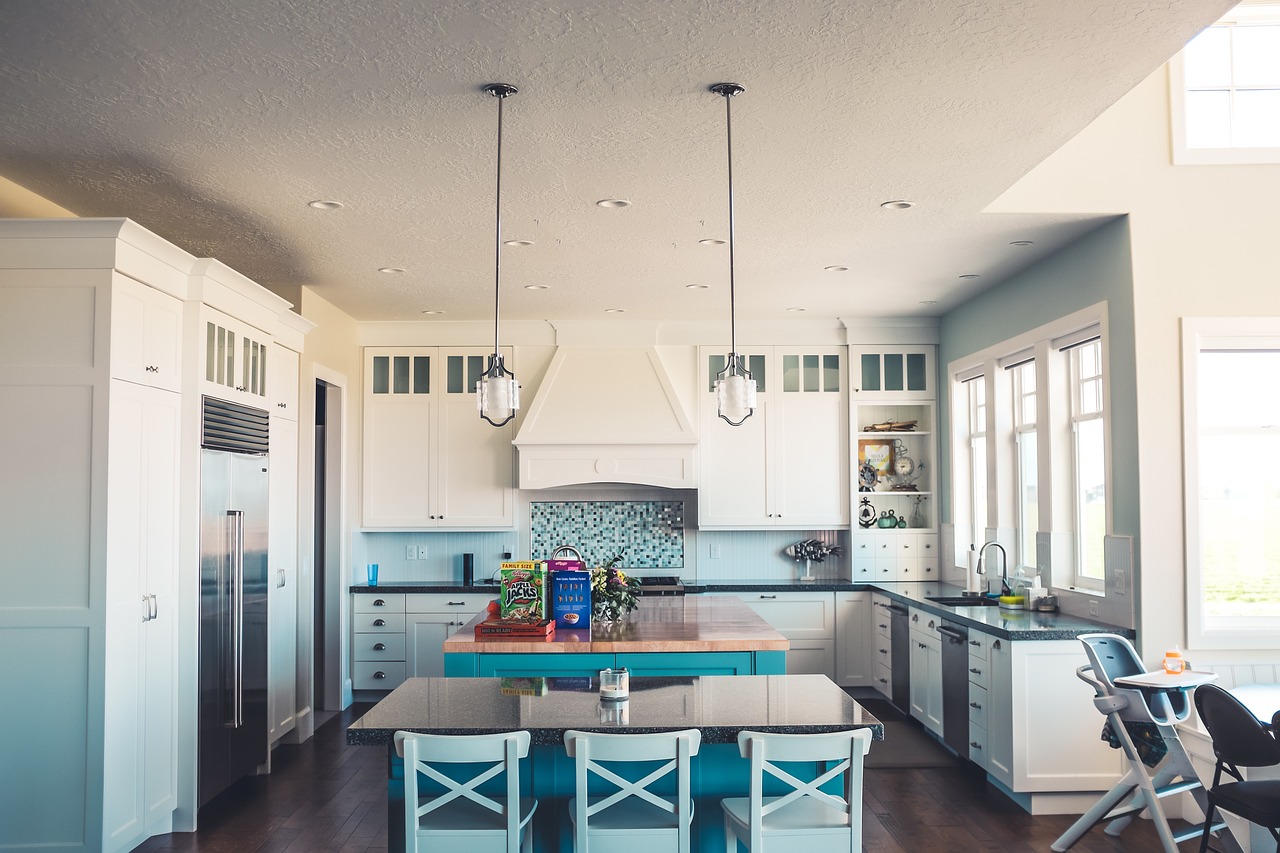
Step-by-Step Transformation Process
Transforming your dining table into a stylish desk is not just a project; it's an adventure! The process can seem daunting, but with the right steps, it can be a fun and rewarding experience. First and foremost, you’ll want to gather all your tools and materials before diving in. This pre-planning will save you from unnecessary interruptions and frustration. Think of it as preparing for a journey: you wouldn’t set out without a map, right?
Once you have everything ready, the first step is to disassemble the table. This is where you’ll need to channel your inner handyman or handywoman. Carefully take apart the table, noting how each piece fits together. A good tip is to keep all screws and small parts in a labeled container, so you won’t lose them during the process. If you’re feeling particularly organized, you can even sketch a simple diagram of how the table is assembled. This will come in handy during reassembly!
Next up is the modification phase. Depending on the height of your dining table, you may need to make adjustments to ensure it’s comfortable for working. A standard desk height is around 28 to 30 inches, so measure your table and decide if you need to add or remove any legs. If your table is too high, consider cutting down the legs or adding a new set of shorter legs. If you’re feeling creative, you could even replace the legs with something more stylish, like hairpin legs or wooden blocks for a rustic look.
After you’ve got the structure just right, it’s time to focus on the surface area. If the tabletop is too large, you might want to trim it down to a more manageable size. Remember, a desk should be functional but also fit well within your space. You can also consider adding a smooth finish to the surface. Sanding the tabletop will not only make it look polished but also prepare it for painting or staining.
Once you’ve modified the structure and surface, it’s time to reassemble the table. This is where your earlier notes and diagrams will come in handy. Make sure everything is securely fastened and stable. You don’t want your new desk wobbling while you’re trying to work!
Finally, let’s not forget the finishing touches! This is your chance to really make the desk your own. Consider applying a fresh coat of paint or a stain that complements your home decor. If you prefer a more natural look, a clear sealant can enhance the wood’s grain while protecting it from wear and tear. And don’t be afraid to get creative! You can add decorative elements like stencils or decals to give your desk a personal flair.
To summarize, here’s a quick overview of the transformation process:
| Step | Description |
|---|---|
| 1 | Disassemble the dining table carefully, keeping all parts organized. |
| 2 | Modify the height and structure to suit your needs. |
| 3 | Reassemble the table securely. |
| 4 | Apply finishing touches with paint, stain, or decorative elements. |
And there you have it! By following these steps, you can successfully transform your dining table into a stunning desk that not only serves its purpose but also adds character to your workspace. So roll up your sleeves and get started on this exciting DIY project!
Q: Do I need special skills to repurpose a dining table?
A: Not at all! Basic tools and a bit of patience are all you need. Follow the steps carefully, and you’ll be fine.
Q: How long will the transformation take?
A: Depending on your experience and the complexity of the modifications, it can take anywhere from a few hours to a couple of days.
Q: Can I use any dining table for this project?
A: Most dining tables can be repurposed, but it’s best to choose one that’s sturdy and fits the style you want for your desk.
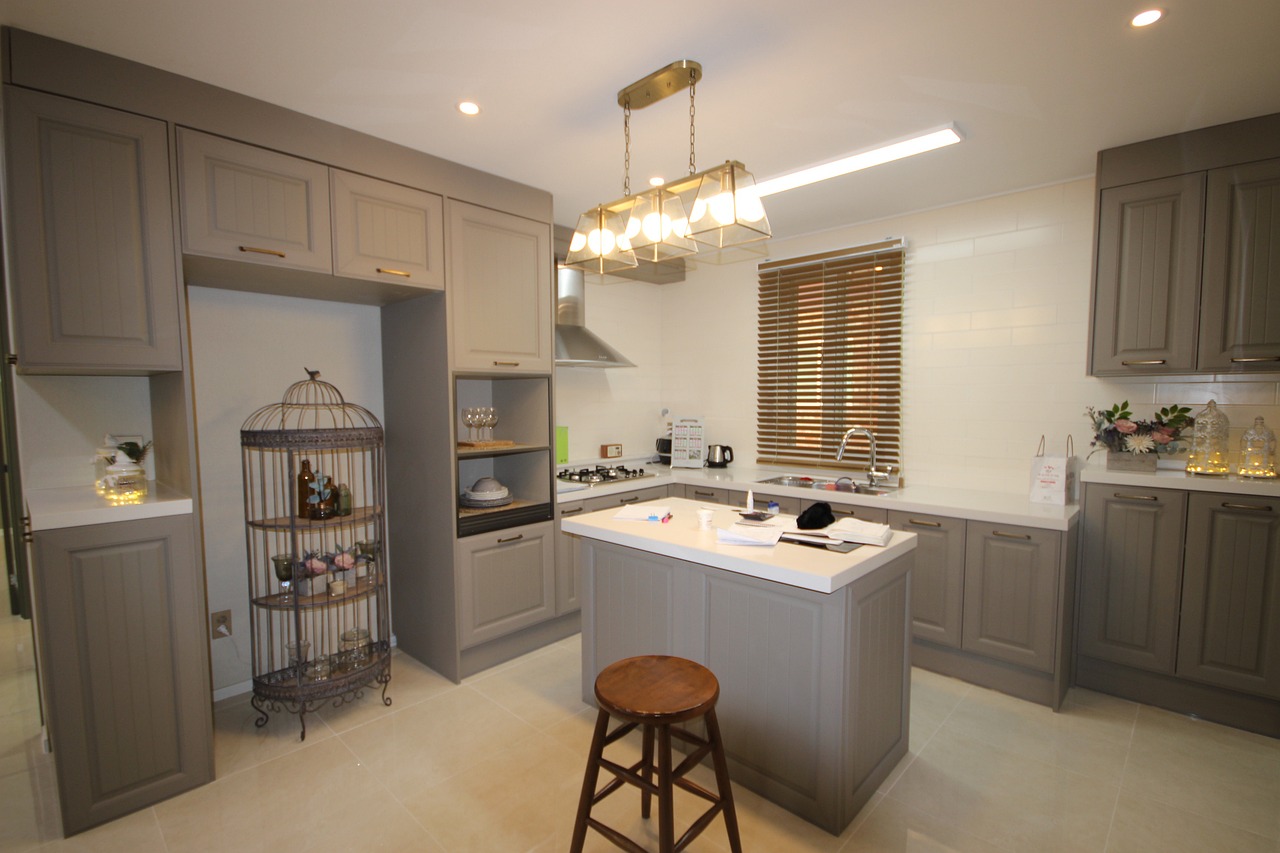
Disassembling the Table
Disassembling your dining table might seem like a daunting task, but with the right approach, it can be an exciting first step in your transformation journey. Think of it as peeling away the layers of an onion; each layer reveals a new opportunity for creativity and style. Before you dive in, it's essential to gather your tools and set up a clean workspace. This will not only make the process smoother but also keep your environment organized and safe.
Start by examining how your dining table is constructed. Most tables have a straightforward assembly, typically held together by screws or dowels. If you're not sure how to proceed, take a moment to look for any manufacturer’s instructions or online videos that show the disassembly process for your specific table model. Knowing the structure will save you time and prevent potential damage.
Here’s a quick rundown of steps to follow when disassembling your table:
- Clear the Table: Remove any items, decorations, or tablecloths to ensure a clean slate.
- Flip It Over: Carefully turn the table upside down. This position will give you better access to the underside where most of the screws are located.
- Locate the Fasteners: Identify screws, bolts, or dowels that hold the table together. Use a screwdriver or wrench as needed.
- Take Notes: As you remove parts, consider taking pictures or jotting down notes on how everything fits together. This will be invaluable when you reassemble your desk.
- Keep Track of Hardware: Use small containers or bags to store screws and other hardware pieces. Label them if necessary to avoid confusion later on.
Once you’ve disassembled your table, take a moment to inspect the components. You might find that some parts can be reused or repurposed in your new desk design. For example, the original tabletop can serve as a beautiful desktop, while the legs can be adjusted or modified for height. This is where your creativity can really shine!
Remember, patience is key during this process. If you encounter any resistance while unscrewing or pulling apart pieces, take a step back and reassess. Forcing components apart can lead to damage, which you definitely want to avoid. A gentle touch and a little finesse will go a long way in ensuring that your table is disassembled safely and effectively.
In conclusion, disassembling your dining table is an essential step in the journey of creating a stunning desk. By approaching this task with care and attention to detail, you set the foundation for a successful transformation. So roll up your sleeves, grab your tools, and let the adventure begin!
Q: Do I need special tools to disassemble my dining table?
A: Generally, basic tools like screwdrivers, wrenches, and possibly a saw for stubborn pieces will suffice. Always check for specific fasteners that may require unique tools.
Q: What if I can't find the assembly instructions?
A: No worries! You can often find assembly guides online by searching for your table's brand and model. YouTube can also be a helpful resource for visual guidance.
Q: Can I reuse parts from my dining table?
A: Absolutely! Many components, such as the tabletop and legs, can be creatively repurposed in your new desk design. Just be sure to assess their condition first.

Modifying the Structure
Once you've successfully disassembled your dining table, it’s time to roll up your sleeves and get into the nitty-gritty of modifying its structure. This step is crucial because the dining table's original design might not be suitable for a desk. Think of it like transforming a caterpillar into a butterfly; you need to make some significant changes to achieve that beautiful new form. The goal here is to create a desk that is not only functional but also comfortable for long hours of work or study.
First and foremost, height adjustment is key. Most dining tables are taller than standard desks, which can lead to discomfort when you’re seated for extended periods. Aim for a height of around 28 to 30 inches from the ground, which is the typical height for a desk. If your table is too tall, consider cutting down the legs. Make sure to measure carefully before making any cuts—measure twice, cut once! If the table is too low, you can add height by attaching sturdy blocks to the legs. This is a great way to keep the integrity of the table while adjusting it to your needs.
Next, you might want to think about the surface area. Is the table too wide or too narrow for your workspace? A desk should provide enough space for your laptop, some notebooks, and possibly a coffee cup or two without feeling cramped. If the surface feels too large, consider cutting it down to a more manageable size. Alternatively, you can add a desktop extension if you need more space for your projects. This could be as simple as attaching a piece of plywood to one side of the table.
Stability is another crucial aspect. A wobbly desk can be incredibly frustrating, especially when you’re trying to type or write. Make sure to reinforce the table's legs if they feel shaky after disassembly. You can use metal brackets or wood glue to secure any loose joints. If you’ve added height, ensure that the new structure is sturdy enough to support the weight of your computer and other items without tipping over. A solid foundation is essential for a functional workspace.
Lastly, consider the finish of the table. After making structural changes, you’ll want to ensure that the desk looks as good as it functions. Sand down any rough edges or surfaces created during the modification process to avoid splinters or snags. Once you’ve smoothed everything out, it’s time to apply your choice of paint or stain. This is your opportunity to give your desk a fresh look—choose a color that complements your home office decor or reflects your personal style. A well-finished desk can turn a simple piece of furniture into a stunning focal point in your workspace.
In summary, modifying the structure of your dining table into a desk involves careful consideration of height, surface area, stability, and finish. By paying attention to these details, you can create a workspace that is not only functional but also a joy to use every day.
- Can I use any dining table for this project? - While most dining tables can be transformed into desks, it's best to choose one that is sturdy and has a surface area that meets your needs.
- What tools do I need for height adjustment? - A saw for cutting legs, a drill for securing brackets, and a measuring tape for accuracy are essential tools for height adjustment.
- How can I ensure my desk is stable after modifications? - Reinforce the legs with brackets and ensure all joints are tight. Testing the desk for wobbliness before finishing touches is a good practice.
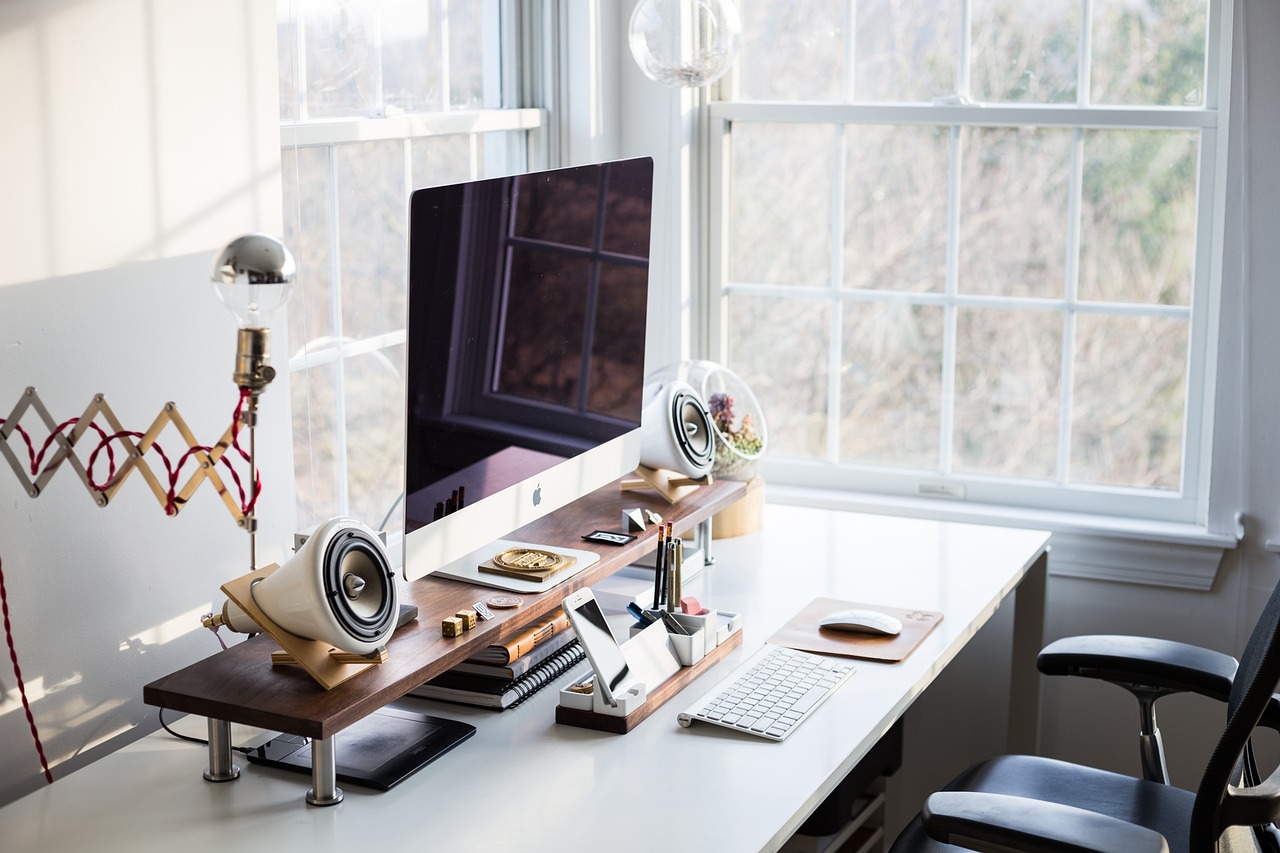
Adding Personal Touches
When it comes to making your newly transformed desk truly yours, personal touches are the secret ingredient that can elevate your workspace from mundane to magnificent. Think about it: your desk is not just a place to work; it’s a reflection of your personality, your style, and even your aspirations. So, how do you go about adding those unique elements that will make your desk stand out? Let’s dive into some creative ideas!
First and foremost, let’s talk about colors and patterns. The right color palette can completely change the vibe of your workspace. Are you drawn to soothing pastels, vibrant hues, or perhaps a classic monochrome look? Consider using paint or wallpaper to add a splash of color to your desk. For instance, if you’re a fan of nature, earthy tones like greens and browns can create a calming atmosphere. Alternatively, if you thrive on energy and creativity, bold colors like red or bright yellow might be more your style. Patterns can also play a significant role; think about adding a fun geometric pattern or floral design that resonates with you.
Next up, let’s not forget about accessorizing. Accessories can transform a simple desk into a functional and inviting workspace. Start by incorporating organizers that not only keep your workspace tidy but also add a touch of flair. You might consider a stylish pen holder, a chic file organizer, or even a decorative tray for your daily essentials. Additionally, lighting plays a crucial role in creating an inviting atmosphere. A unique desk lamp can serve as both a practical tool and a statement piece. Imagine a vintage lamp or a modern LED fixture that complements your desk’s aesthetic!
Moreover, don’t underestimate the power of decorative elements. Adding personal mementos or artwork can infuse your workspace with warmth and personality. Perhaps a framed photo of a cherished memory, a piece of art that inspires you, or even a small plant can breathe life into your desk. Plants, in particular, can improve air quality and add a splash of greenery, making your workspace feel more vibrant and alive. Just be sure to choose low-maintenance varieties if you’re not particularly green-thumbed!
Lastly, the importance of functionality cannot be overlooked. While aesthetics are important, your desk should also cater to your needs. Think about your daily tasks and how you can optimize your workspace. For example, if you often work with multiple devices, consider incorporating a charging station or cable management solutions to keep everything organized. This way, your desk remains not only stylish but also practical.
In conclusion, adding personal touches to your desk is all about expressing yourself and creating a space that inspires productivity and creativity. Whether it’s through color, accessories, or decorative elements, let your personality shine through. After all, your desk should be a place where you feel comfortable and motivated to tackle your tasks. So, what are you waiting for? Start customizing your desk today!
Q: What type of paint is best for my desk?
A: Use acrylic or chalk paint for a smooth finish that adheres well to wood surfaces. Make sure to choose a paint that is suitable for furniture to ensure durability.
Q: How can I ensure my desk remains functional while being stylish?
A: Focus on incorporating organizers and accessories that serve a purpose while also complementing your desk's design. Choose items that enhance usability without cluttering your space.
Q: Are there any specific plants that are easy to care for?
A: Yes! Consider low-maintenance plants like succulents, snake plants, or pothos, which require minimal watering and thrive in various lighting conditions.

Choosing Colors and Patterns
When it comes to transforming your dining table into a stylish desk, the colors and patterns you choose can significantly influence the overall vibe of your workspace. Think of your desk as a blank canvas; the right hues can evoke creativity, calmness, or even energy—depending on what you need to fuel your productivity. So, how do you choose the perfect palette? Let's dive in!
First off, consider the ambiance you want to create. If you’re aiming for a serene and peaceful workspace, soft blues and greens can be your best friends. These colors are known for their ability to promote tranquility and focus. On the other hand, if you want to inject some energy into your space, vibrant colors like yellows or oranges can do the trick. Just imagine how a splash of sunny yellow can brighten your mood on a dreary day!
Another factor to keep in mind is the existing decor in your home. Your desk should harmonize with the rest of your space. For instance, if your living area features earthy tones, a rustic brown or deep green might blend seamlessly. In contrast, a modern space with sleek furniture might benefit from a bold black or white finish. Consider creating a color palette that includes:
- Main Color: This will be the dominant hue of your desk.
- Accent Color: Use this for smaller details like drawer handles or decorative elements.
- Neutral Shades: These can provide balance and allow your main colors to shine.
Patterns can add an extra layer of personality to your desk. Whether you opt for a geometric design, floral motifs, or even a classic striped pattern, the key is to ensure that the pattern complements your color choice. For example, a solid color desk with a vibrant patterned mat can create a stunning focal point. Or, if you’re feeling adventurous, why not paint the top of your desk with a bold pattern that reflects your personality? Just remember to keep it cohesive with your overall decor.
Lastly, think about the finish of your chosen colors. A glossy finish can create a modern and polished look, while a matte finish can evoke a more rustic and cozy vibe. If you’re leaning towards paint, consider experimenting with a few samples on a small section of your desk first. This way, you can see how the colors interact with the light in your space throughout the day.
Choosing the right colors and patterns for your desk is not just about aesthetics; it's about creating a space where you feel inspired and productive. So take your time, explore different combinations, and let your creativity shine through!
Q: How do I decide on a color scheme for my desk?
A: Consider the mood you want to create, the existing decor in your home, and whether you prefer bold or subtle colors. Experimenting with samples can also help you visualize the final look.
Q: Can I mix different patterns on my desk?
A: Yes, mixing patterns can add interest! Just ensure that they complement each other and maintain a cohesive color palette.
Q: What type of finish should I choose for my desk?
A: This depends on your style preference. Glossy finishes give a sleek look, while matte finishes offer a more understated and cozy feel.
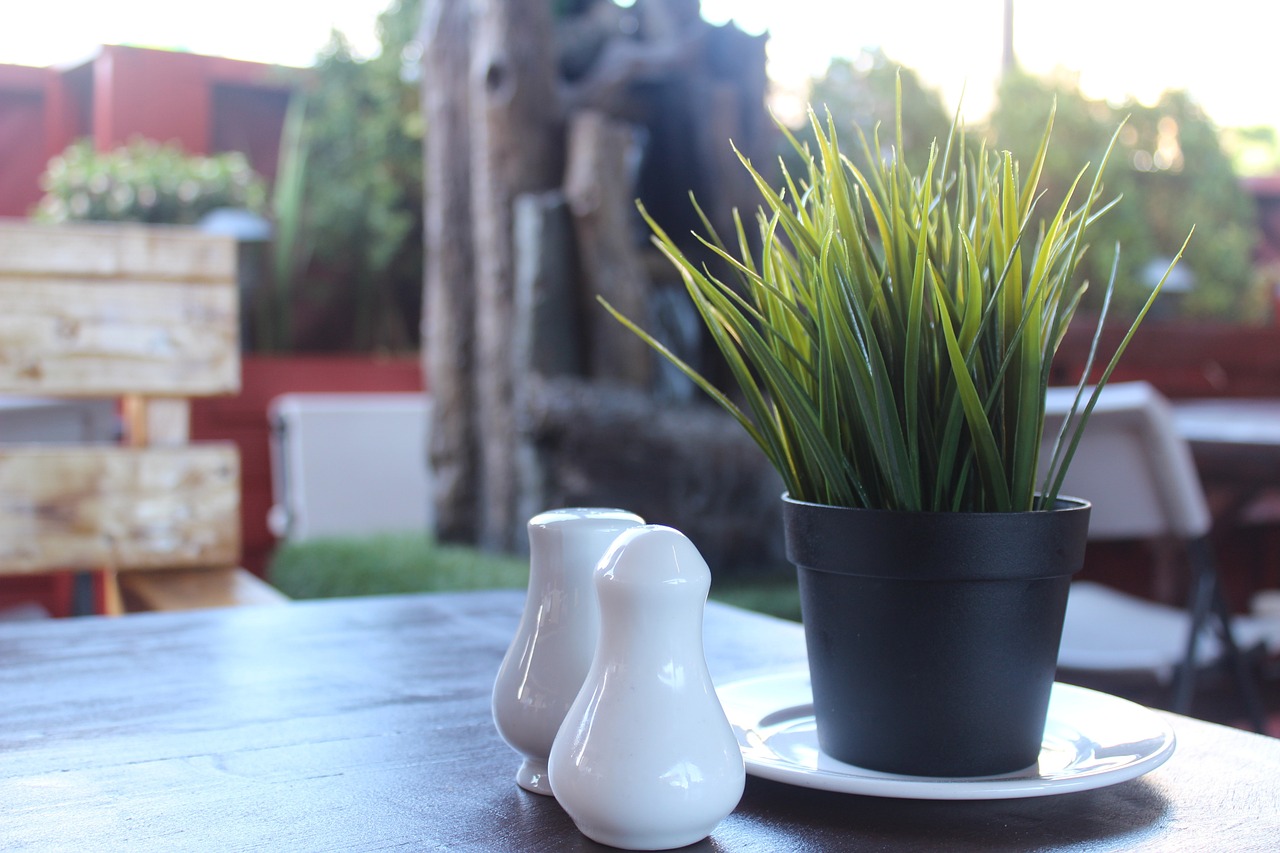
Accessorizing Your Desk
When it comes to creating a workspace that inspires productivity and creativity, accessorizing your desk is key. Think of your desk as a blank canvas; the right accessories can transform it from a simple workspace into a vibrant hub of inspiration. Whether you’re working from home, studying for exams, or pursuing a passion project, the accessories you choose can significantly impact your mood and efficiency. So, how do you accessorize your desk effectively? Let’s dive into some ideas that can help you personalize your workspace.
First off, consider the importance of organization. A cluttered desk can lead to a cluttered mind, so investing in stylish organizers can make a world of difference. From desk trays to drawer dividers, having a designated spot for everything can streamline your workflow. For example, you might opt for a chic pen holder that not only keeps your writing tools in check but also adds a splash of color to your desk. You could even choose a multi-tiered organizer that allows you to separate papers, notebooks, and miscellaneous items, keeping everything within reach yet tidy.
Next, let’s talk about lighting. Good lighting is crucial for maintaining focus and reducing eye strain, especially during those late-night work sessions. A stylish desk lamp can serve both functional and aesthetic purposes. Look for lamps that offer adjustable brightness settings, so you can create the perfect ambiance for any task. Additionally, consider incorporating some ambient lighting, such as fairy lights or a small LED strip, to add a cozy touch to your workspace. These little details can create an inviting atmosphere that makes you want to spend more time at your desk.
Another way to elevate your desk is through decorative elements. Personal touches can make your workspace feel more like you. Think about adding framed photos, inspirational quotes, or artwork that resonates with you. A small plant or succulent can also bring life to your desk, improving air quality and creating a calming environment. Not only do these elements enhance the visual appeal of your workspace, but they can also serve as daily reminders of what motivates you.
Finally, don’t forget about tech accessories. In today’s digital age, having the right tech gadgets can greatly improve your productivity. Consider investing in a wireless charging pad for your phone or a stylish cable organizer to keep cords from tangling. A quality mouse pad can also enhance your comfort while working. If your desk is equipped with a computer, think about a monitor stand that not only elevates your screen to eye level but also provides extra storage underneath.
In summary, accessorizing your desk is about creating a space that reflects your personality while enhancing functionality. By incorporating organizational tools, effective lighting, personal decor, and tech accessories, you can transform your dining table-turned-desk into a stylish and productive workspace. Remember, the goal is to create an environment that fosters creativity and efficiency, so choose accessories that inspire you every day.
- What are some budget-friendly desk accessories? You can find affordable options at thrift stores, or even make your own organizers using recycled materials.
- How can I make my desk more ergonomic? Consider using an adjustable chair, a monitor stand, and wrist supports to promote better posture.
- Are there specific colors that enhance productivity? Yes, colors like blue and green are known to promote calmness and focus, while yellow can inspire creativity.
Frequently Asked Questions
- What dining table works best for conversion into a desk?
When choosing a dining table to convert into a desk, consider factors like size, shape, and material. A rectangular or square table typically offers more surface area for a workspace. Opt for sturdy materials like hardwood for durability, and ensure it fits well within your intended space.
- What tools do I need to repurpose my dining table?
To successfully transform your dining table, you'll need essential tools such as a saw, drill, sander, and measuring tape. These tools will help you disassemble, modify, and reassemble the table efficiently. Having a reliable set of tools will streamline your project and ensure a professional finish.
- How do I ensure accurate measurements during the transformation?
Accurate measurements are crucial for a seamless conversion. Use a tape measure to determine the dimensions of the table and the space where it will be placed. A square can help ensure your cuts are straight, which is vital for stability and aesthetics. Take your time measuring to avoid any costly mistakes!
- What types of finishes can I use on my new desk?
Enhancing your desk's appearance can be achieved with various finishes. Consider using paints, stains, or sealants to give the surface a fresh look. Choose colors and finishes that complement your home decor, and don't forget to apply a protective coating to ensure longevity!
- Can I add personal touches to my desk?
Absolutely! Personalizing your desk can make it feel uniquely yours. You can choose colors and patterns that reflect your style, and accessorize with organizers, decorative elements, and lighting. These touches not only enhance the aesthetics but also improve functionality.
- Is it difficult to disassemble the dining table?
Disassembling a dining table can be straightforward if you follow the right steps. Start by removing any screws or bolts carefully, and keep track of all components. If you're unsure, consult the manufacturer's instructions or look for online tutorials specific to your table type.
- How can I modify the height of my dining table desk?
To modify the height of your dining table desk, you can either cut the legs down to the desired height or add extensions to the existing legs. Make sure to measure your chair height to ensure comfort while working. Stability is key, so ensure any modifications are secure!
- What accessories can I use to enhance my desk?
There’s a plethora of accessories you can use to enhance your desk! Consider adding desk organizers for your stationery, stylish lamps for proper lighting, and decorative plants for a touch of nature. These items not only beautify your workspace but also help keep it organized and functional.













